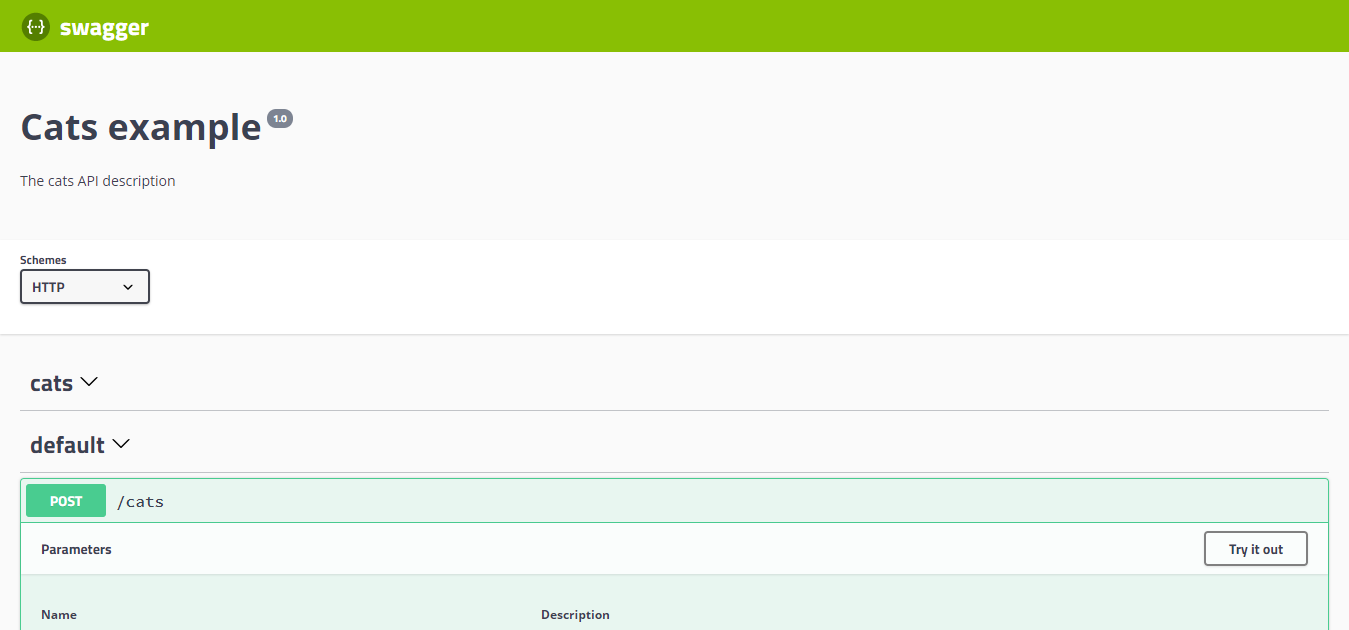Introduction
The OpenAPI specification is a language-agnostic definition format used to describe RESTful APIs. Nest provides a dedicated module which allows generating such a specification by leveraging decorators.
Installation#
To begin using it, we first install the required dependencies.
$ npm install --save @nestjs/swagger swagger-ui-expressIf you use fastify, install fastify-swagger instead of swagger-ui-express:
$ npm install --save @nestjs/swagger fastify-swaggerBootstrap#
Once the installation process is complete, open the main.ts file and initialize Swagger using the SwaggerModule class:
import { NestFactory } from '@nestjs/core';
import { SwaggerModule, DocumentBuilder } from '@nestjs/swagger';
import { AppModule } from './app.module';
async function bootstrap() {
const app = await NestFactory.create(AppModule);
const options = new DocumentBuilder()
.setTitle('Cats example')
.setDescription('The cats API description')
.setVersion('1.0')
.addTag('cats')
.build();
const document = SwaggerModule.createDocument(app, options);
SwaggerModule.setup('api', app, document);
await app.listen(3000);
}
bootstrap();The DocumentBuilder helps to structure a base document that conforms to the OpenAPI Specification. It provides several methods that allow setting such properties as title, description, version, etc. In order to create a full document (with all HTTP routes defined) we use the createDocument() method of the SwaggerModule class. This method takes two arguments, an application instance and a Swagger options object.
Once we create a document, we can call the setup() method. It accepts:
- the path to mount the Swagger UI
- an application instance
- the document object instantiated above
Now you can run the following command to start the HTTP server:
$ npm run startWhile the application is running, open your browser and navigate to http://localhost:3000/api. You should see the Swagger UI.

The SwaggerModule automatically reflects all of your endpoints. Note that the Swagger UI is created using either swagger-ui-express or fastify-swagger, depending on the platform.
Hint To generate and download a Swagger JSON file, navigate tohttp://localhost:3000/api-jsonin your browser (assuming that your Swagger documentation is available underhttp://localhost:3000/api).
Example#
A working example is available here.

